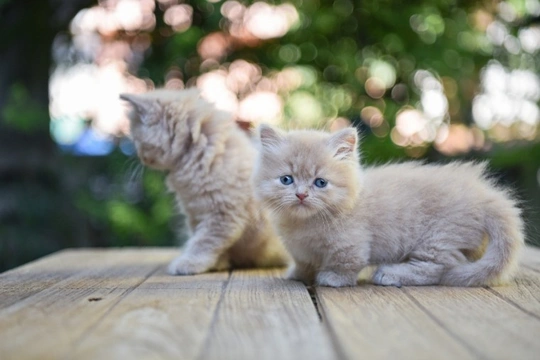
Why are some unrecognised cat breeds so expensive?
The purchase price any given person paid for their cat can vary wildly, from free up to potentially over £2,000 in some cases, with figures in this ballpark usually being reserved for star-quality kittens from impeccable bloodlines that stand a strong chance of going on to be future show winners themselves.
Trying to determine the average cost of a cat is almost impossible; if you adopt a kitten, you’ll probably be asked for between £60-£200 as a donation towards the shelter costs, whilst a very broad average for a pet-quality cat of popular breeds like the Persian or Siamese fall around the £600 mark.
However, if you’re browsing for cats for sale in general, are trying to narrow down your choice to a couple of particular pedigree breeds, or are looking for something a bit more unusual than the pedigree breeds most of us know relatively well, some of the prices you find might confuse you.
There are a number of cat types that are not recognised as breeds by the GCCF (Governing Council of the Cat Fancy, the UK’s umbrella registry for pedigree cats) but that have been bred deliberately for certain traits in large enough numbers that they are known by type names, and which makes many people think they’re actually pedigrees; like the Savannah cat, and the Munchkin.
Sometimes, these named-type cats that aren’t GCCF recognised not only command the same sort of figures as pedigree cats of popular breeds, but often significantly more; well over £1,000 in many cases.
So, why are some unrecognised cat breeds so expensive to buy? Some of the reasons are specific to the traits and type of cat in question, whilst others are more universal. In this article we’ll look at both factors, and outline some of the main reasons why cats of some unrecognised-by-the-GCCF breeds are so expensive to buy. Read on to learn more.
There’s a wild ancestor in the recent gene pool
The Savannah cat is a wild cat/domestic cat hybrid, and very costly to buy. The Bengal is another such hybrid, and one that also used to be very expensive, but which is less so today. But why?
Well, Bengals today are in general many generations removed from their wild ancestors, and it is almost unheard of for UK breed lines to be back-crossed to a first generation wild cat, or for new F1 cats to be bred.
The Savannah, on the other hand, is much more closely related to their wild ancestor, and the cost, difficulty and implications of breeding both a domestic to a wild cat in the first instance and the first few generations down the breed line from there are much higher than regular breeding programmes.
This cost is of course then passed onto buyers.
They possess unique features that make them in great demand
Every cat breed and defined type has by definition, unique features that set them apart from others. However, some breeds and types possess such unique and unusual features that they cannot be found in any other cat type; and if this feature or trait is highly desirable to buyers and no other cat displays it, this makes them in great demand.
A high level of demand means of course high prices.
Most cats of the type are imported
Some non-pedigree cat types are more common and populous in other countries than here; which means that anyone in the UK who wants to own one or even to set up a breed line to produce them would need to import a cat or cats, or possibly, buy an imported cat.
This naturally costs a lot of money, and this is reflected in the average pricing, both for those original imported cats and the generations they produce later when cats of the type are still in short supply.
They’re costly or difficult to breed
Some cat breeds are more challenging to produce than others; for instance, when you take the Savannah or other cats with a wild ancestor, breeding with a wild cat is much more challenging.
This tends to make breeding them more expensive to achieve, raising the cost of kittens from viable litters exponentially.
They have small litters
Some unrecognised cat breeds may have a tendency to have small litters, potentially because there’s a genetic factor in play that results in their unique appearance – and which can affect their health. This is the case for the Scottish fold, which is not recognised by the GCCF due to the health implications of the Scottish fold gene and the deleterious impact it has upon cats of the breed.
As well as the health implications of some such breeds or types with genetic defects, in some cases, crossing two cats with a certain combination of the relevant genes will result in unviable foetuses and/or resorptions or still births in all or part of the litter, reducing the number of potential cats that can be bred from and potentially, litter sizes too.
The cost of breeding a litter isn’t reduced when a litter is small, which means a higher cost per kitten to cover the breeder’s overheads.
Every unrecognised breed will have different factors dictating its average price – but if one of those reasons is a health or genetic issue and this is why they’re unrecognised, please think very carefully about both the moral and logistical implications of buying a cat of that type.



